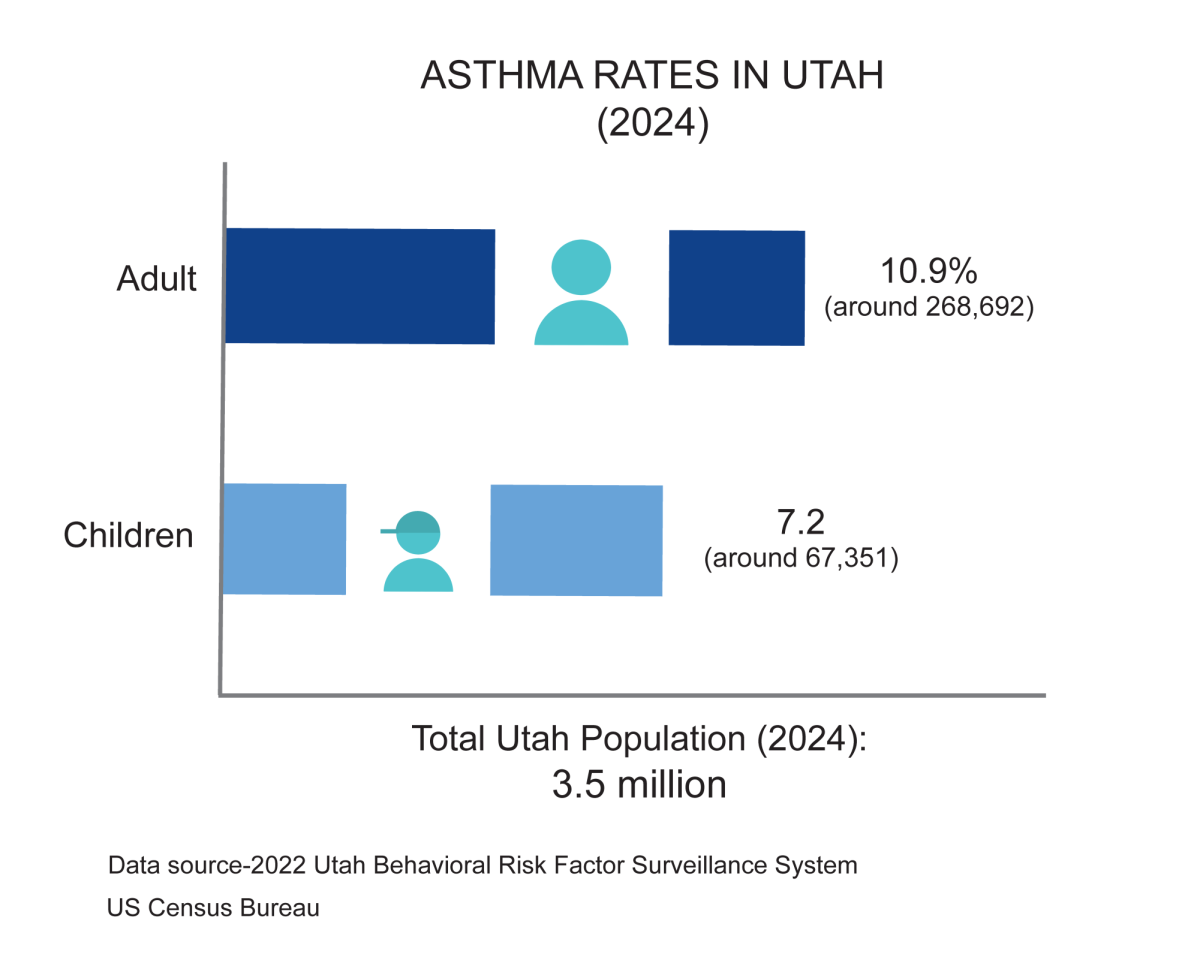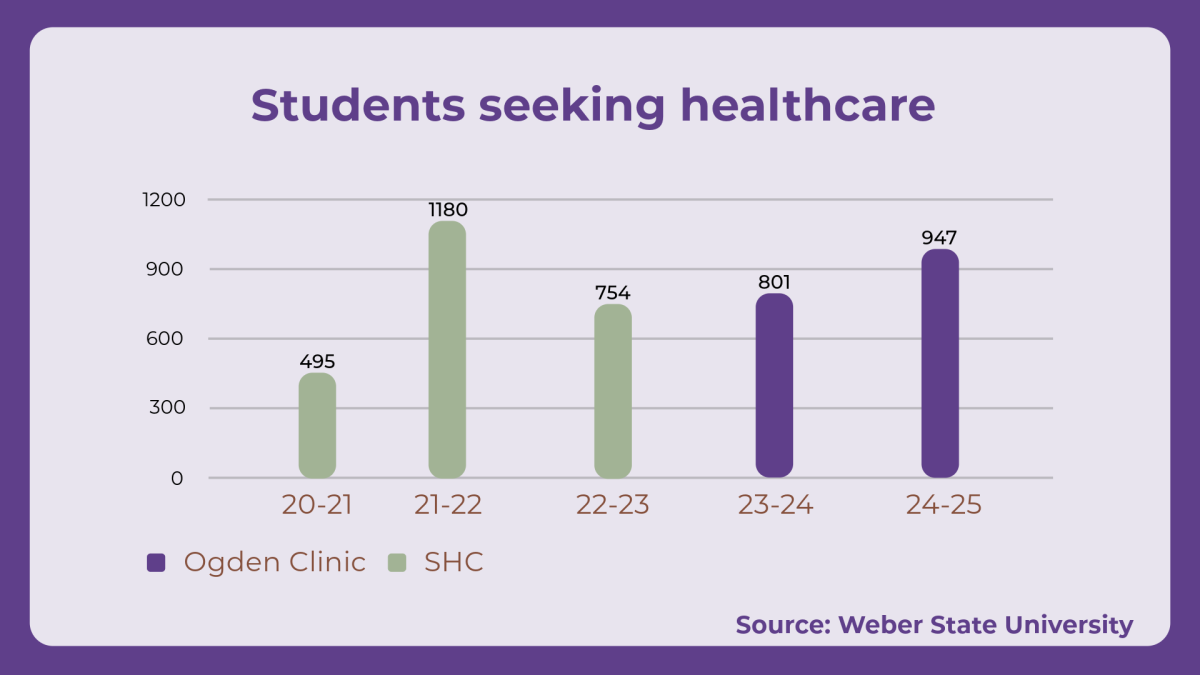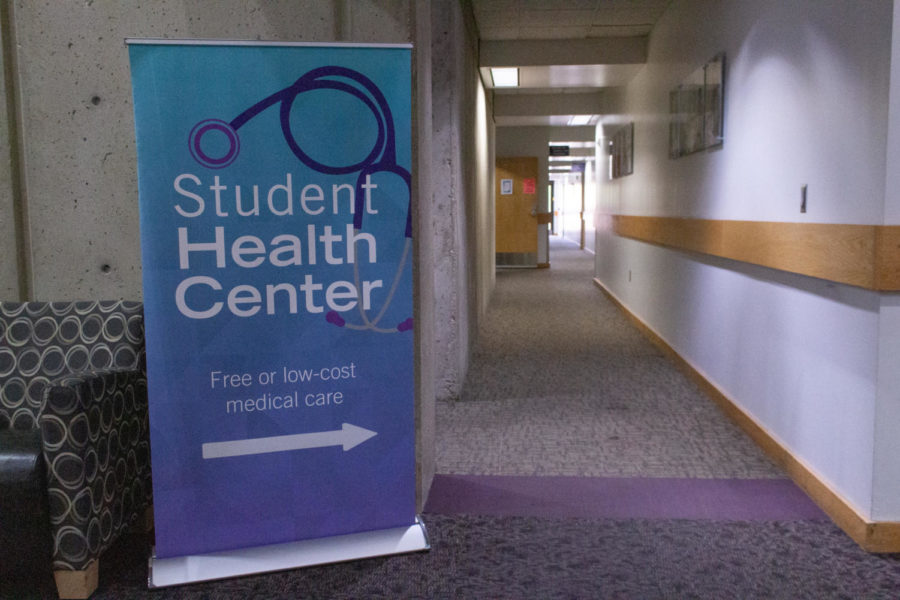
Concern is rising about the flu epidemic that has claimed the lives of children across the United States.
As of Jan. 3, 26 children have died from flu this season, which began in September, according to the Centers for Disease Control and Prevention (CDC).
The number of hospitalizations in Utah from the flu are the highest they have been in the last four seasons. With three to four months remaining in this year’s flu season, the CDC is unsure whether or not the season has peaked yet.
Jennifer Baxter, a computer science major at Weber State University and mother of three, voiced her concern about the rise in child deaths. Baxter has visited the doctor’s office more often this year for her two eldest children than she has in previous years, she said.
“As a mother of a special needs child who tends to get respiratory problems when she gets sick, it’s very concerning,” Baxter said.
In January, the CDC reported a decline in the number of people seeing their healthcare providers for flu-type sicknesses to 5.6 percent. However, this still remained well above the national baseline of 2 percent.
The baseline is created by calculating the average percentage of patient visits for flu-like illnesses during the non-flu weeks for the previous three seasons.
Although her family gets yearly vaccinations, Baxter said this year they seemed to have missed the mark.
“They’ve all been sicker than is typical this year,” she said. Baxter tests the children’s blood oxygen level when they get sick and if it goes below 90, she takes them to the hospital.
Levels of flu are high in Utah, according to the CDC, with some counties higher than others. The baseline in Region 8, which includes Utah, is 1.3 percent and the percent of flu-like illness is 4.4 percent this season, well above the baseline. This puts Utah in the red for flu activity.
Davis, Weber and Morgan counties report low-to-moderate levels of influenza compared with Salt Lake and Utah counties, which have a high level of flu-like illnesses, according to the Utah Department of Health.
Children younger than 5 years old, adults 65 and older, pregnant women and people who may have previous medical conditions are at a higher risk of flu complications such as pneumonia and bronchitis. These complications can lead to hospitalization or death.
The CDC is advising anyone who has not been vaccinated to get the shots, and assures the public that the vaccine is still beneficial while the flu is circulating among the community.
Although the flu vaccine may not have been as effective as previous years in her household, Baxter said she still intends on continuing her children’s vaccinations every year.
The CDC recommends that almost anyone over the age of 6 months be vaccinated, and warns that it takes up to two weeks for a person’s body to develop the immune response needed to fight off the virus.
Although there may be other strains of the flu going around, the vaccine protects against three or four different flu viruses. The vaccine may also provide protection from other strains and lessen the severity of hospitalization and death.
If you do catch the flu, the CDC emphasizes the need for early antiviral treatments, especially among those who are considered “high risk.” Studies have shown that the treatments work the best if administered two days after you get sick. The antiviral treatments will lessen the severity of symptoms and the length of time you are sick.
If anyone in your family is experiencing flu-like symptoms, it is important to stay home to prevent spreading the disease.
If you are feeling ill, Weber State offers a free Student Health Center to all students in Room 190 in the Student Services Center on the Ogden campus and Room 220 on Davis campus.













